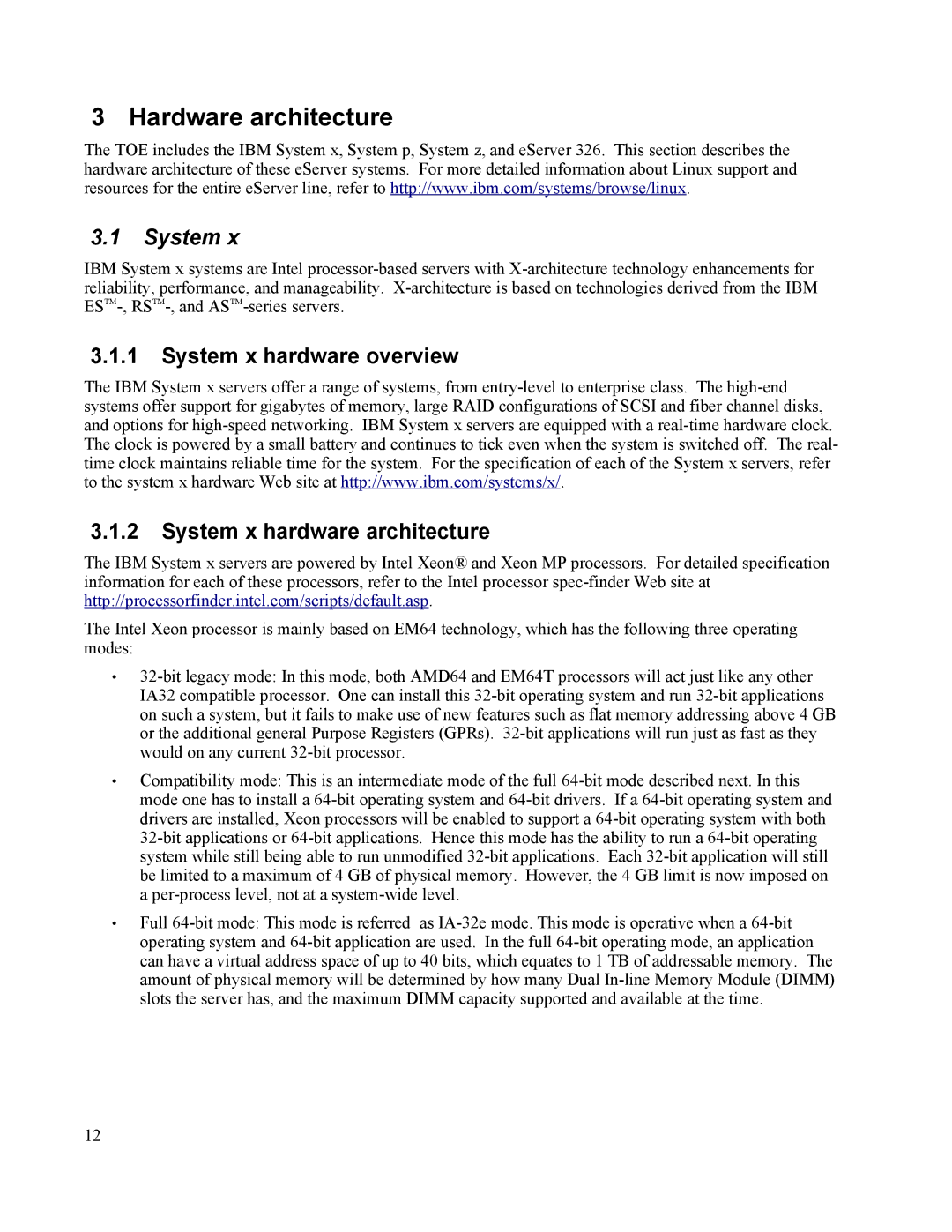3 Hardware architecture
The TOE includes the IBM System x, System p, System z, and eServer 326. This section describes the hardware architecture of these eServer systems. For more detailed information about Linux support and resources for the entire eServer line, refer to http://www.ibm.com/systems/browse/linux.
3.1System x
IBM System x systems are Intel processor-based servers with X-architecture technology enhancements for reliability, performance, and manageability. X-architecture is based on technologies derived from the IBM ESTM-, RSTM-, and ASTM-series servers.
3.1.1System x hardware overview
The IBM System x servers offer a range of systems, from entry-level to enterprise class. The high-end systems offer support for gigabytes of memory, large RAID configurations of SCSI and fiber channel disks, and options for high-speed networking. IBM System x servers are equipped with a real-time hardware clock. The clock is powered by a small battery and continues to tick even when the system is switched off. The real- time clock maintains reliable time for the system. For the specification of each of the System x servers, refer to the system x hardware Web site at http://www.ibm.com/systems/x/.
3.1.2System x hardware architecture
The IBM System x servers are powered by Intel Xeon® and Xeon MP processors. For detailed specification information for each of these processors, refer to the Intel processor spec-finder Web site at http://processorfinder.intel.com/scripts/default.asp.
The Intel Xeon processor is mainly based on EM64 technology, which has the following three operating modes:
•32-bit legacy mode: In this mode, both AMD64 and EM64T processors will act just like any other IA32 compatible processor. One can install this 32-bit operating system and run 32-bit applications on such a system, but it fails to make use of new features such as flat memory addressing above 4 GB or the additional general Purpose Registers (GPRs). 32-bit applications will run just as fast as they would on any current 32-bit processor.
•Compatibility mode: This is an intermediate mode of the full 64-bit mode described next. In this mode one has to install a 64-bit operating system and 64-bit drivers. If a 64-bit operating system and drivers are installed, Xeon processors will be enabled to support a 64-bit operating system with both 32-bit applications or 64-bit applications. Hence this mode has the ability to run a 64-bit operating system while still being able to run unmodified 32-bit applications. Each 32-bit application will still be limited to a maximum of 4 GB of physical memory. However, the 4 GB limit is now imposed on a per-process level, not at a system-wide level.
•Full 64-bit mode: This mode is referred as IA-32e mode. This mode is operative when a 64-bit operating system and 64-bit application are used. In the full 64-bit operating mode, an application can have a virtual address space of up to 40 bits, which equates to 1 TB of addressable memory. The amount of physical memory will be determined by how many Dual In-line Memory Module (DIMM) slots the server has, and the maximum DIMM capacity supported and available at the time.
